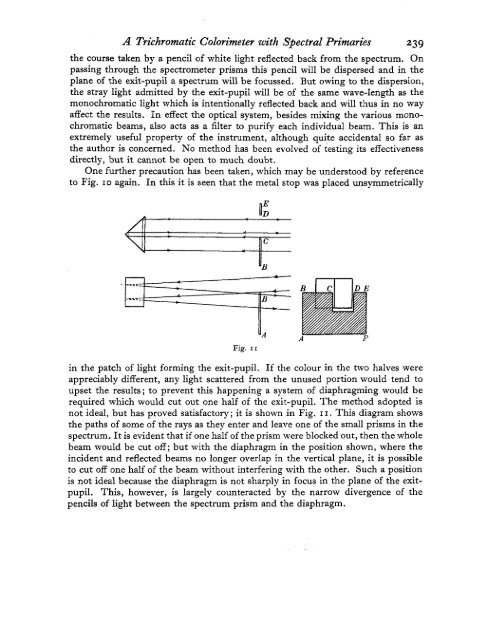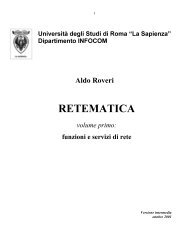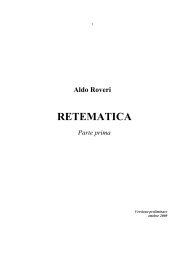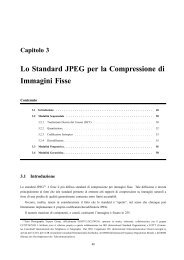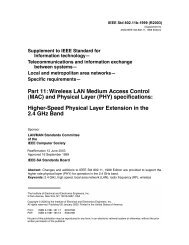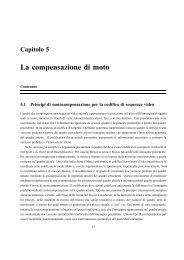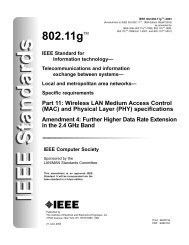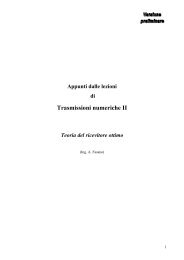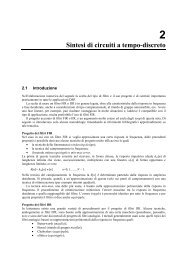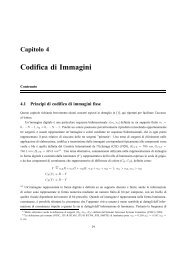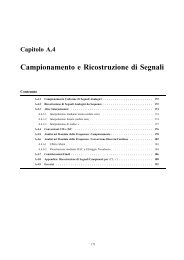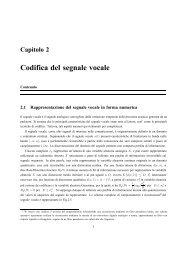a trichromatic colorimeter with spectral primaries - InfoCom
a trichromatic colorimeter with spectral primaries - InfoCom
a trichromatic colorimeter with spectral primaries - InfoCom
Create successful ePaper yourself
Turn your PDF publications into a flip-book with our unique Google optimized e-Paper software.
A Trichromatic Colorimeter <strong>with</strong> Spectral Primaries 239<br />
the course taken by a pencil of white light reflected back from the spectrum. On<br />
passing through the spectrometer prisms this pencil will be dispersed and in the<br />
plane of the exit-pupil a spectrum will be focussed. But owing to the dispersion,<br />
the stray light admitted by the exit-pupil will be of the same wave-length as the<br />
monochromatic light which is intentionally reflected back and will thus in no way<br />
affect the results. In effect the optical system, besides mixing the various mono-<br />
chromatic beams, also acts as a filter to purify each individual beam. This is an<br />
extremely useful property of the instrument, although quite accidental so far as<br />
the author is concerned. No method has been evolved of testing its effectiveness<br />
directly, but it cannot be open to much doubt.<br />
One further precaution has been taken, which may be understood by reference<br />
to Fig. IO again. In this it is seen that the metal stop was placed unsymmetrically<br />
Fig. II<br />
A F<br />
in the patch of light forming the exit-pupil. If the colour in the two halves were<br />
appreciably different, any light scattered from the unused portion would tend to<br />
upset the results; to prevent this happening a system of diaphragming would be<br />
required which would cut out one half of the exit-pupil. The method adopted is<br />
not ideal, but has proved satisfactory; it is shown in Fig. I I. This diagram shows<br />
the paths of some of the rays as they enter and leave one of the small prisms in the<br />
spectrum. It is evident that if one half of the prism were blocked out, then the whole<br />
beam would be cut off; but <strong>with</strong> the diaphragm in the position shown, where the<br />
incident and reflected beams no longer overlap in the vertical plane, it is possible<br />
to cut off one half of the beam <strong>with</strong>out interfering <strong>with</strong> the other. Such a position<br />
is not ideal because the diaphragm is not sharply in focus in the plane of the exit-<br />
pupil. This, however, is largely counteracted by the narrow divergence of the<br />
pencils of light between the spectrum prism and the diaphragm.


